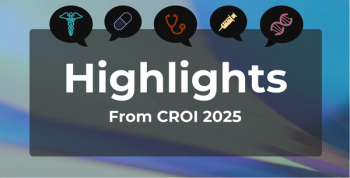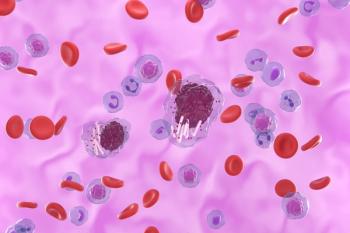
Accessibility Important After FDA Approves Lenacapavir for PrEP: Q&A With Colleen Kelley, MD, MPH
The approval of lenacapavir, a form of pre-exposure prophylaxis (PrEP), marks significant progress in preventing HIV, making it vital for the treatment to be available and accessible to those most vulnerable, explains Colleen Kelley, MD, MPH, Rollins School of Public Health at Emory University.
The prevention of
This transcript has been lightly edited for clarity.
AJMC: With the FDA’s decision to approve lenacapavir for use as PrEP, what does this mean for the future of global HIV prevention?
KELLEY: PrEP was first approved as a daily oral pill in 2012, tenofovir and emtricitabine in combination, and this really revolutionized what we do for HIV prevention. We could give someone a pill that they took every day that was highly effective, nearly 100% effective if taken early every day in preventing acquisition of HIV infection. This was just incredible. And a lot of people across the globe have benefited from daily oral PrEP. But also, a lot of people haven't benefited. And the people who've not benefited from daily oral PrEP are either those people who were not aware of it or did not have access to it, and those people who had trouble taking a daily pill every day over a long period of time—so people who had adherence challenges. We know across the globe that about 50% of people who start daily oral PrEP stop it within the first year. That means they're not getting the protection that they need. What long-acting injectables do is take away that need to take a daily pill every day.
We see much higher efficacy rates with long acting injectables than we do with daily oral PrEP because of that removal of the need for taking a pill every day, of removing the need to adhere to something every single day. What we've seen is startling effective results. For lenacapavir, 100% efficacy for HIV prevention in women in PURPOSE 1 [NCT04994509], 96% [reduction in risk of HIV] in men and gender diverse people [in PURPOSE 2]. So really incredible efficacy results that we have not seen in clinical trials of daily oral PrEP because of issues with adherence.
AJMC: What were the principal findings of PURPOSE 2 and how did they inform the approval of lenacapavir?
KELLEY: What the FDA is looking at is, of course, efficacy, but also safety. What we've seen from the thousands of people who have received many thousands of injections in both PURPOSE 1 and PURPOSE 2 is that this drug is also extremely safe for HIV prevention. We don't see high rates of adverse effects, and we also don't see high rates of discontinuation of the drug over time in the data that we have so far.
AJMC: What are the major pros and cons to lenacapavir that have cropped up during research?
KELLEY: The major pro is, as we've been discussing, that exceptionally high efficacy rate and the lack of need for daily adherence to a pill or even frequent injections. We do have approval of cabotegravir, which is also a long-acting injectable for prevention, but that requires injections every 2 months. Moving into every 6 months really removes the burden on the health care system and on the patient who's getting the drug to not have to get it but twice a year. That's really an incredible durability of prevention over a 6-month period of time. Future formulations of this particular drug may even be delivered at longer intervals of a year or more, which is really incredible to think about. That's the tremendous pro.
The cons are few, but certainly one could be the cost of the drug. We don't know yet how much the drug will cost. If it's very expensive, then it will not be accessible to the people who need it most. Adverse effects, as I said, are fairly minimal and very few people actually discontinued the drug because of them. But the drug does cause nodules under the skin. Because it's a long-acting drug, there's a depot of the medication that's injected under the skin, and over time that depot releases the medication into the system. That's how the drug is supposed to work. But some people are not satisfied with the nodules, and occasionally, some people might discontinue the drug because they don't like the nodules that are present. But they're not painful, and they do dissipate over time as the drug is released.
AJMC: What do you think the future of research into lenacapavir entails, and how can it expand on lenacapavir's use going forward?
KELLEY: Two things. First, we already mentioned that they are looking at longer intervals of injections, so we'll see if those are safe and well tolerated in the trial. That's 1 thing. But now we really move to implementation science. Now we move to, how do we get this drug to everyone who needs it? There are a lot of determinants in that. There will be a lot of barriers and facilitators of that that need to be studied. They need to be defined across populations across the globe, to understand how we can best deliver this medication to the people who need it most.
AJMC: Do we know how quickly lenacapavir would be available for clinicians to start prescribing their patients who are most at risk of getting HIV?
KELLEY: Lenacapavir is already in the US, is already approved and being used for treatment of HIV so it's already available. Once the FDA approves the indication for PrEP, it should be available, theoretically, in the US to those who need it. Now, again, I come back to we are waiting to see what the cost will be. What will the assistance look like for people who don't have health insurance? Which health insurance programs will cover it, which will not? All of that kind of remains to be seen. That's where the devil's in the details, and that's where delays in access are potentially barriers to people getting it if their insurance company doesn't cover it for whatever reason, if people can't afford the medication for whatever reason. Those are the things that will likely stop people from having access to it. You would need to speak to Gilead [Sciences, Inc], but my understanding is that supply should not be an issue. But all of this kind of remains to be seen after the approval date.
AJMC: What’s important to note as clinicians and patients look toward the distribution of lenacapavir?
KELLEY: I think in the current context of what's happening in the US, our HIV response [relies] a lot on federal programs and federal support, and all of that is being slashed in the current environment. And so, it is really unclear. Lenacapavir has the potential to really change our response to HIV and really drive down new infections to really low rates. But all of this, I think, is in peril as our public health systems are literally being disintegrated in front of our eyes. It'll be great to have this amazing drug, but if we can't get it to the people who need it at an affordable price, it's useless.
Newsletter
Stay ahead of policy, cost, and value—subscribe to AJMC for expert insights at the intersection of clinical care and health economics.









































